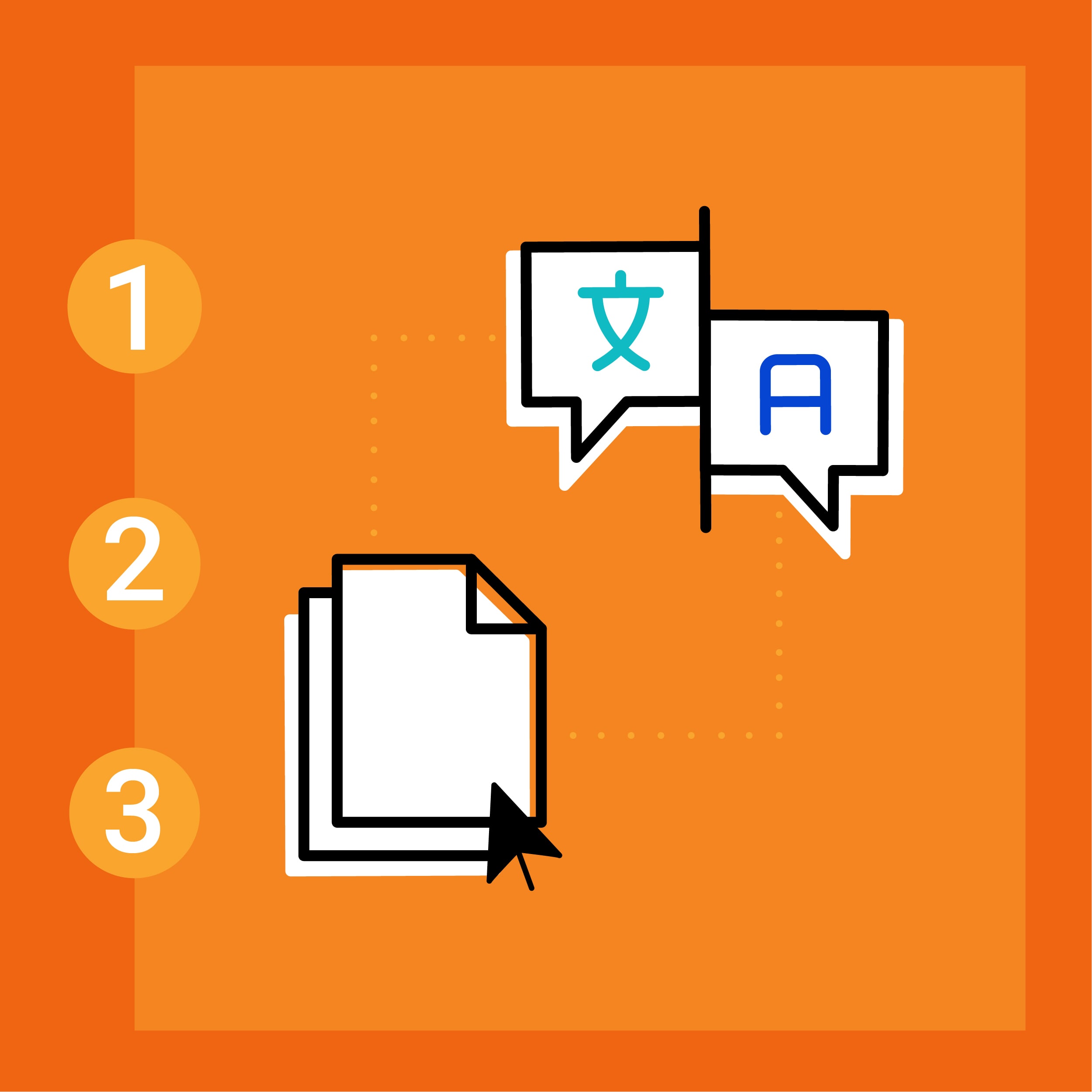If your content will be translated as part of product localization, you may be concerned about the cost and efficiency of translating it into multiple languages. You put a lot of care into how your content is authored and structured. How can you get the most out of this high-quality content so that translation and related localization costs can be kept in check?
There are four considerations for your content regarding efficient translation:
- Controlling the amount of content
- Optimizing content for translation memory use
- Optimizing content for automated translation (machine translation)
- Creating consistent content with clear terminology
Controlling the Amount of Content
Most translations are billed by translators and translation service providers based on a price per word. The fewer words translated, the lower the cost. You could opt to use illustrations with no verbiage to avoid translation costs, but that is hard to do even if you are just instructing how to make a peanut butter and jelly sandwich.
Here is how you can reign in your translation word count:
- Adopt a direct, active style
- Avoid repetition
- Use illustrations
- Structure your content
- Snippetize your repetitive text
Optimizing for Translation Memory Use
The most common type of translation automation is translation memory or TM. TM has been used to increase translator productivity since the early 1980s. TM stores original sentences and their corresponding translations in a database, so that they can easily be recalled and reused when text repeats partially or exactly.
- As above, minimize repetition but strive for consistent usage and style
- Write short sentences
- Avoid complex noun phrases
- Ensure all your content is captured in translation memory
- Maintain translation memories over time--avoid translation memory junk yards
Machine Translation
Increasingly the translation process is automated using machine translation. Machine translation has improved significantly in the last five years--especially with the advent of neural machine translation. During the first decade of this century, statistical machine translation was the state of the art and still plays a significant role in so-called hybrid systems (in which statistical and neural machine translations are used in tandem). In the earliest days of machine translation, rules-based systems were the standard. Controlled language was an effective method used to improve rules-based machine translation.
Based on recent studies it has been found that controlled language has little to no impact on the quality of neural machine translation, but it has been seen to improve the results of rules-based and statistical machine translation. Given the effort and cost required to implement Controlled Language, it makes more sense to focus on structure, style, and terminology in order to gain improvement in translation efficiency.
Also, it is important that your content data be clean. This means that the text should be free of data processing errors (scanning artifacts, broken tags, bad punctuation, and ambiguous sentence segmentation).
Here's your focus:
- Controlled language will not help much with neural machine translation, so only consider it for rules-based and statistical engines
- Follow the same guidance as for human translation: clear, direct style; and consistent terminology
- Ensure you content data is clean
The Foundation: Consistency and Clarity
Unambiguous, well-written content has always led to better translations. These rules apply more than ever when automation is used during the translation process. Regarding ambiguity, this is a barrier for human translators, who have the benefit of being able to read between the lines and make inferences (and ask questions). A machine translation engine has none of those abilities. Consistent use of terminology also makes translation easier.
Here is how to nail consistency and clarity:
- Maintain a glossary (this is the basis for translation terminology)
- Create a style guide
- Maintain an authors’ and translators’ query log
- Correct ambiguous content--avoid relying on explaining your content to translators
Translation—more now than ever—is a “junk in, junk out” process. Address the quality of your original content, and your translation process will benefit.










